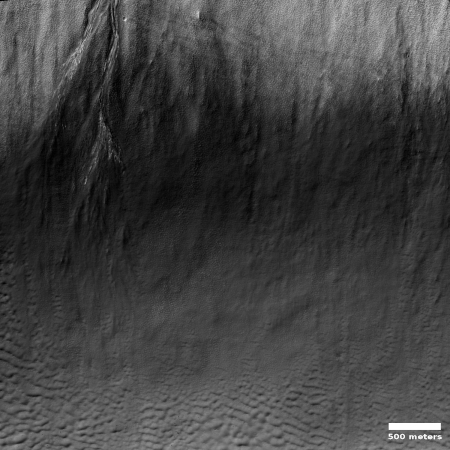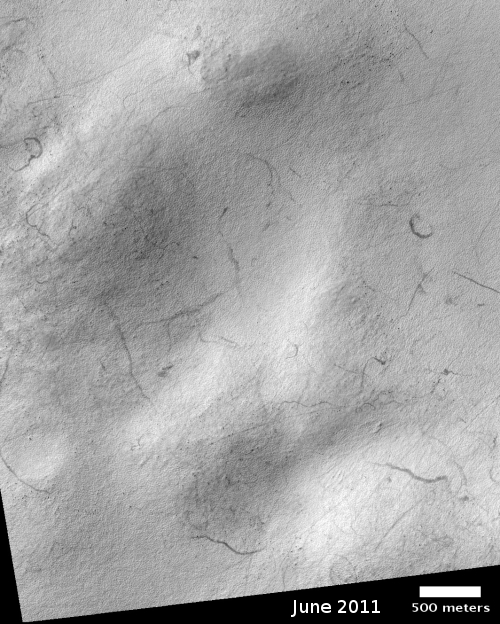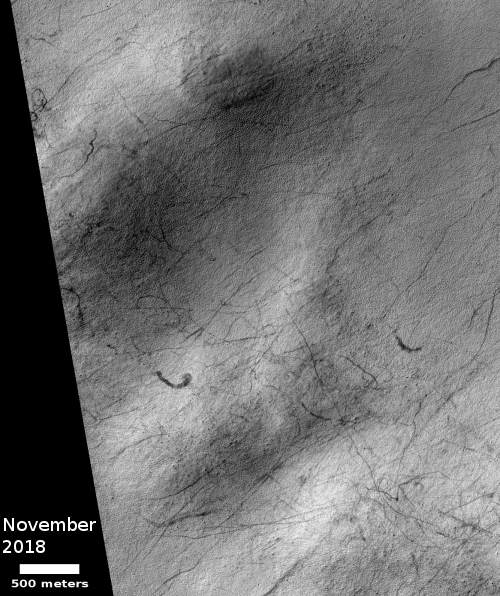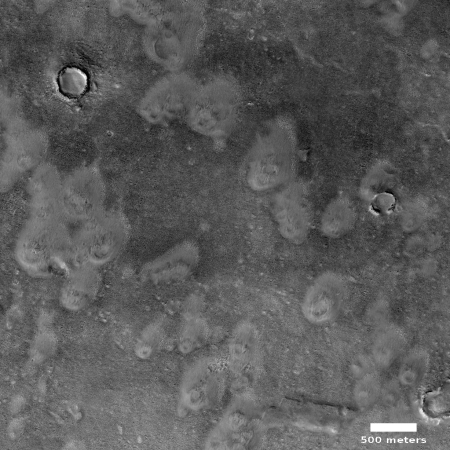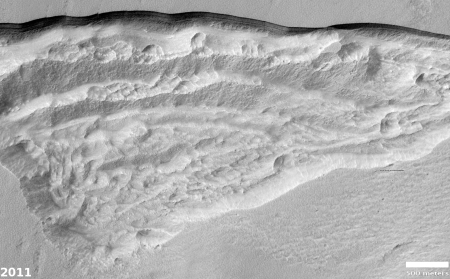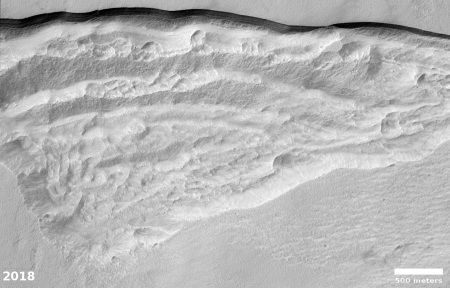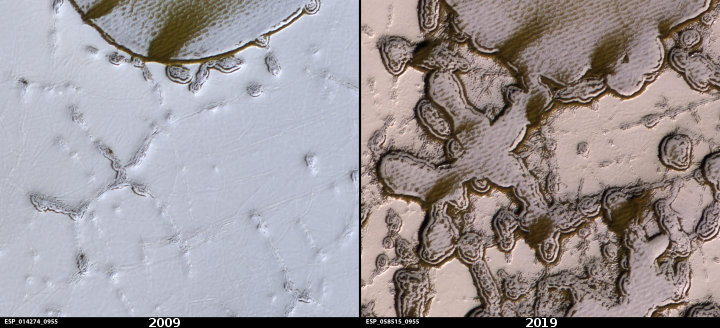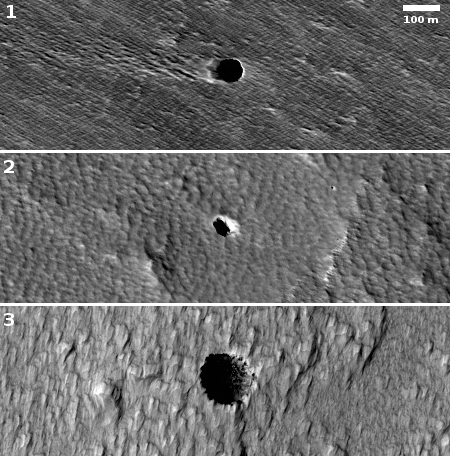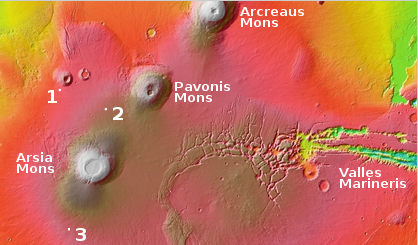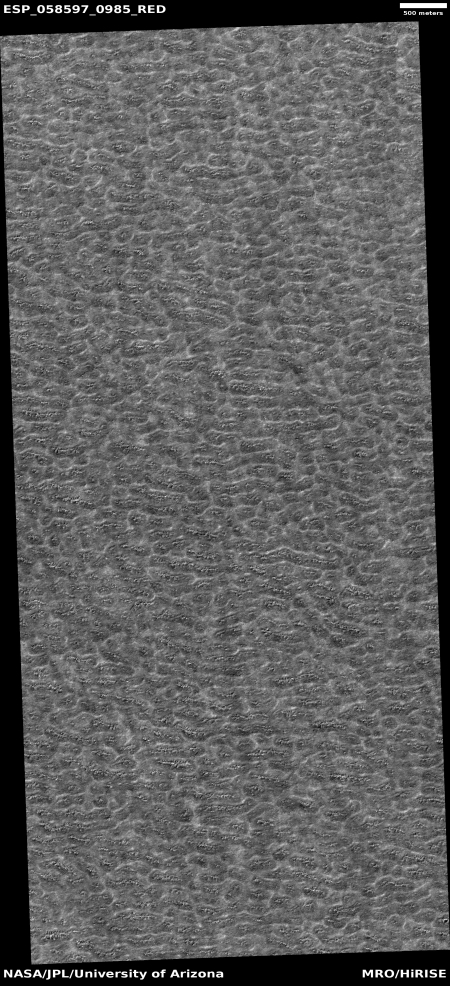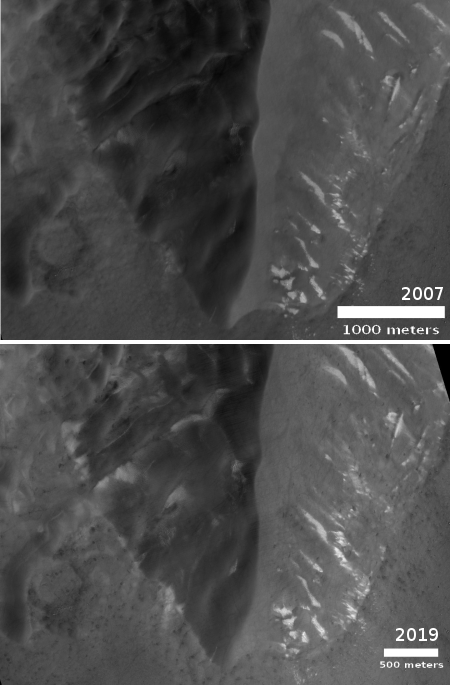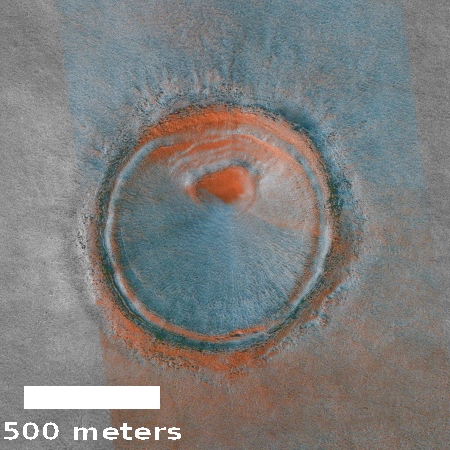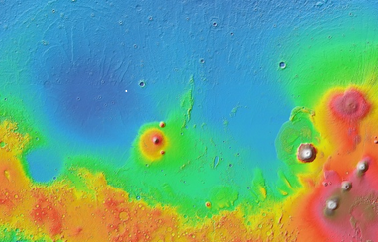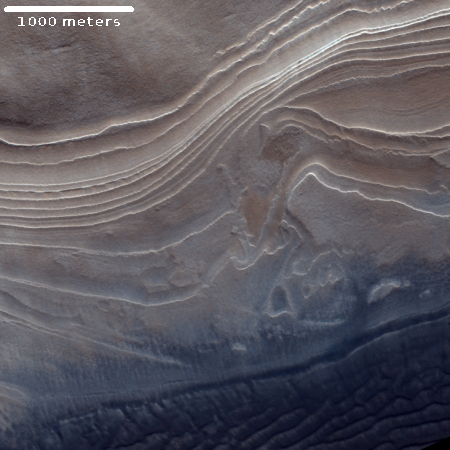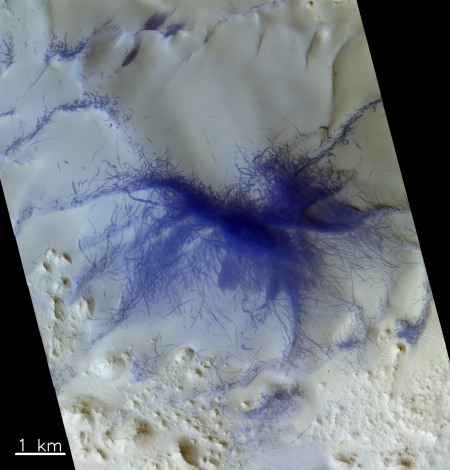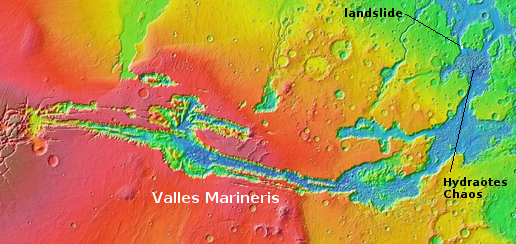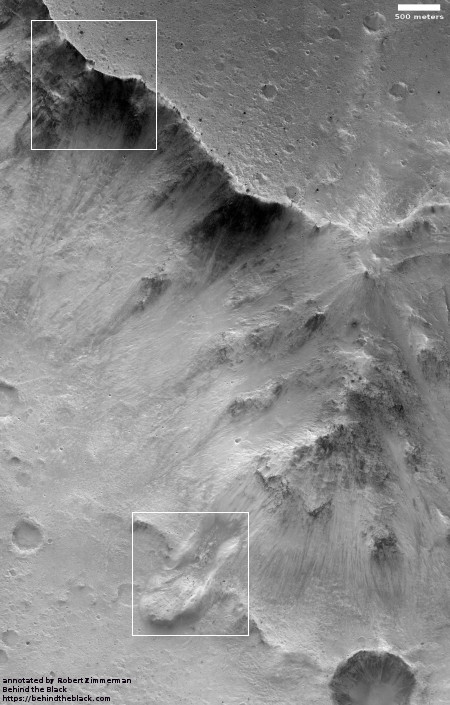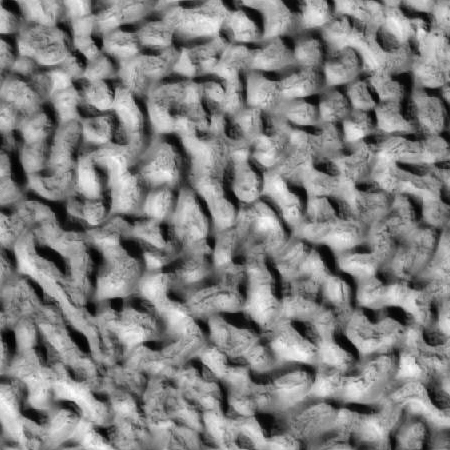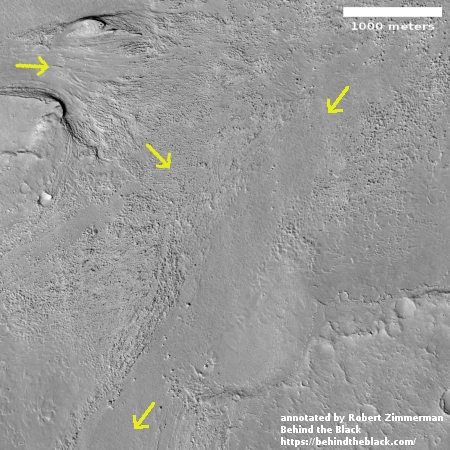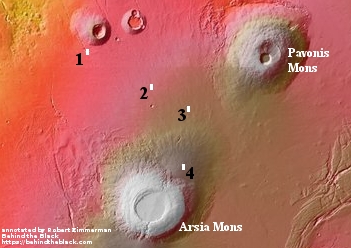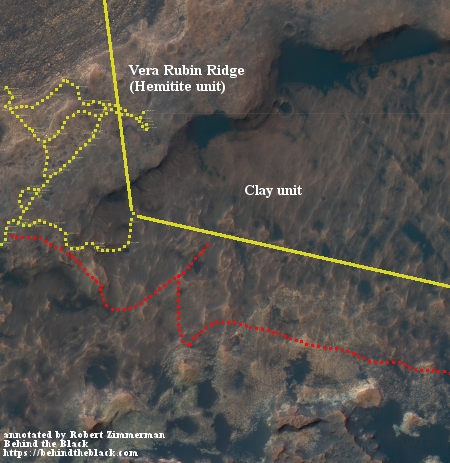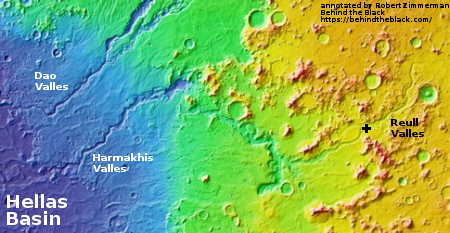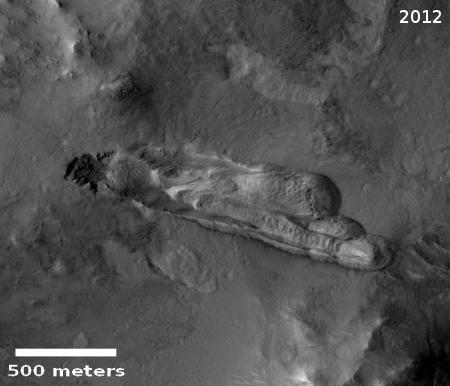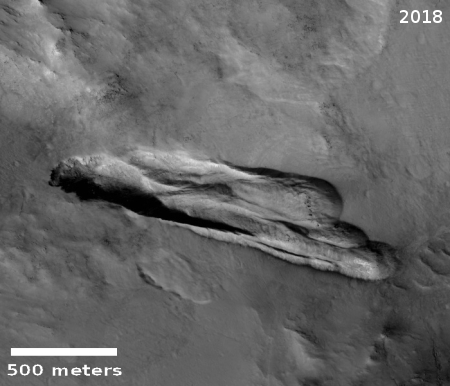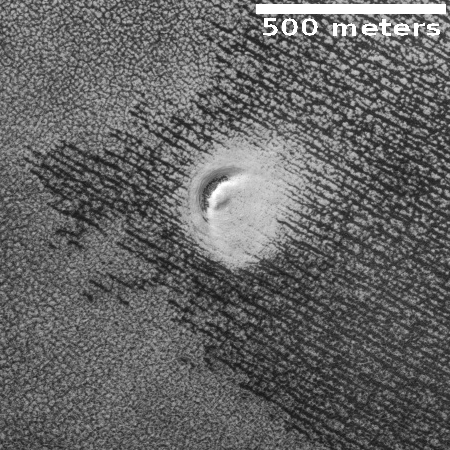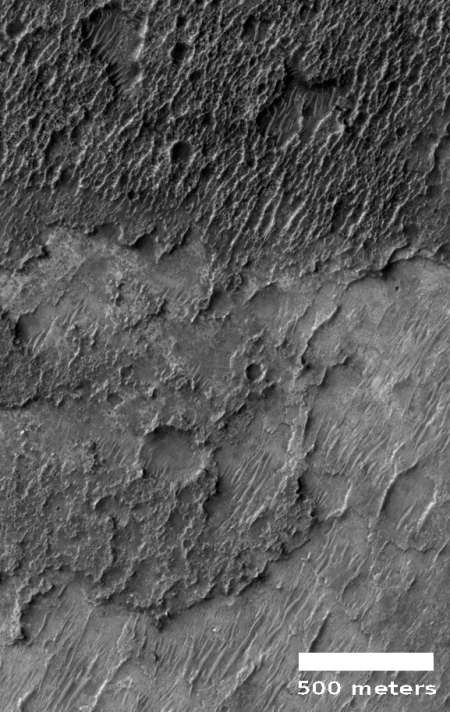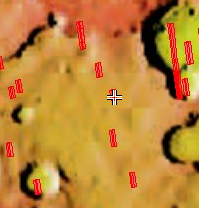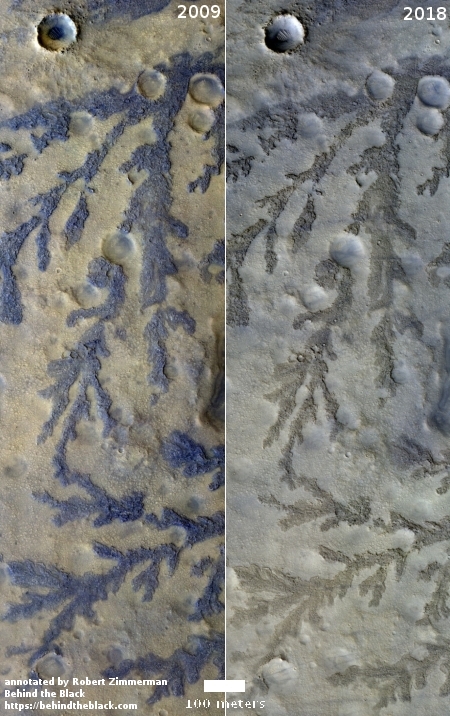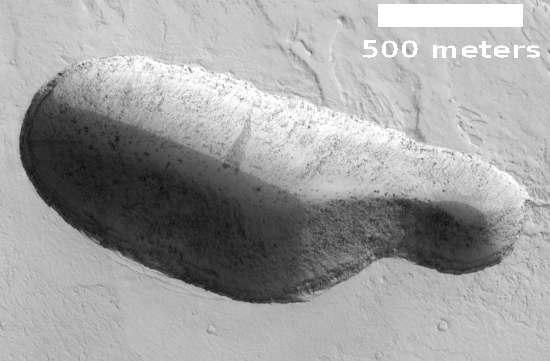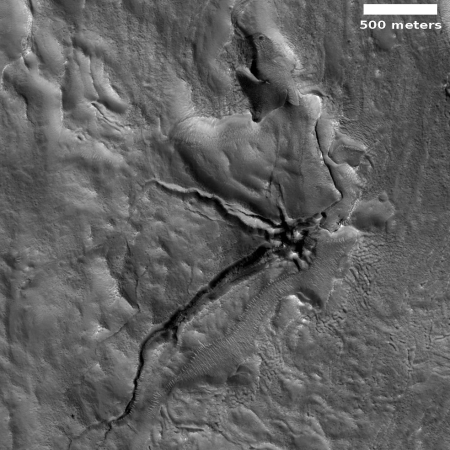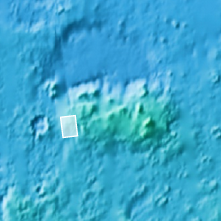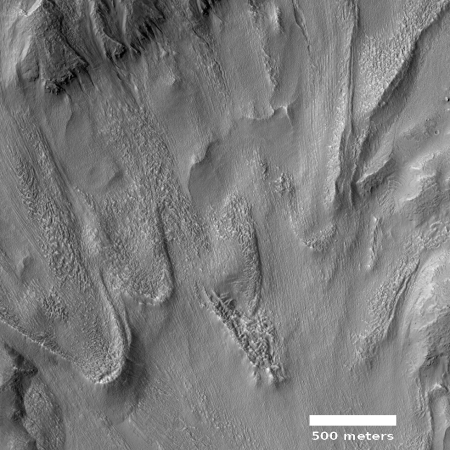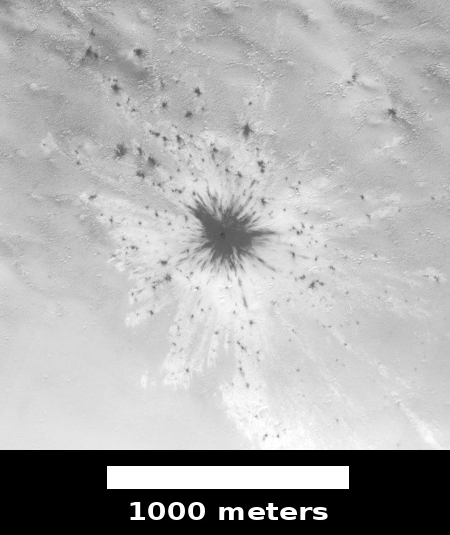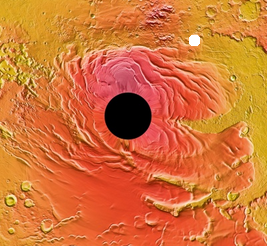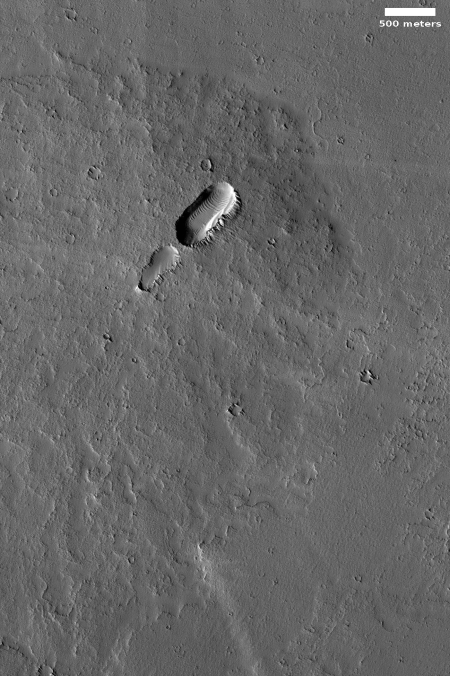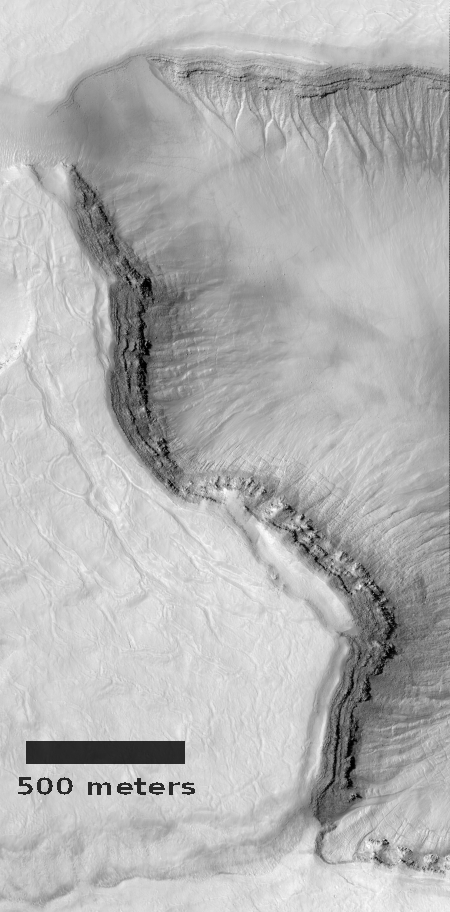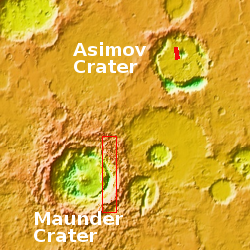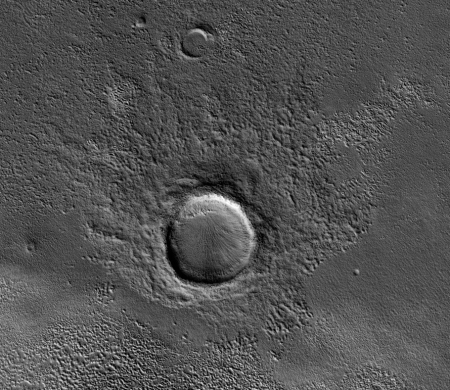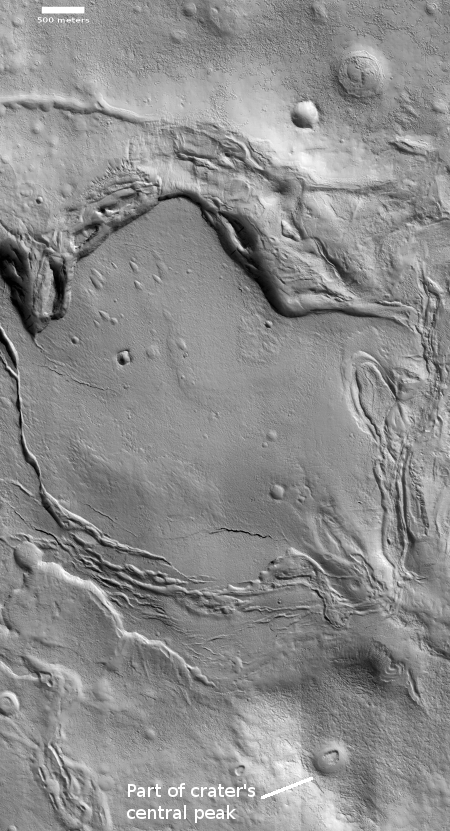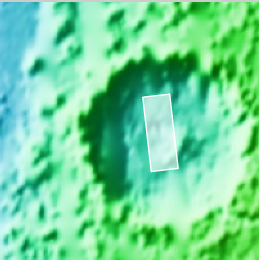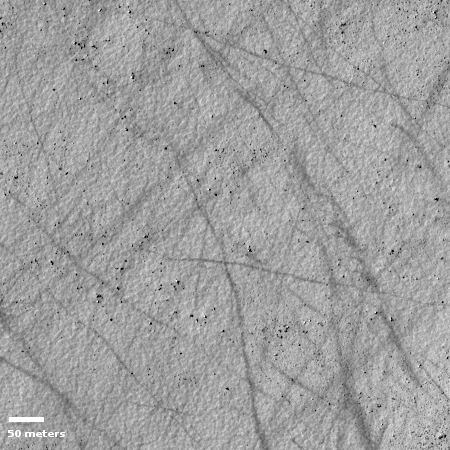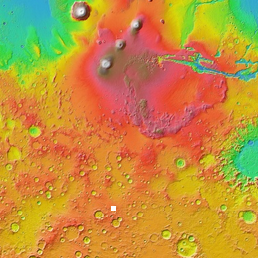Seasonal frost in a gully on Mars
Cool image time! The photo on the right, cropped, reduced, and brightened slightly to post here, was part of the April image release from the high resolution camera on Mars Reconnaissance Orbiter (MRO). According to the titled of this release, it purports to show visible frost on what looks like an avalanche debris slope on the rim of a large crater. The frost is the bright streaks on the upper left of the slope.
I wonder. During last month’s 50th Lunar and Planetary Science Conference in Texas, there was one paper that I reported on that showed something very similar to this, and proposed that white streaks like this in a gully were actually exposed snow/ice. They proposed that the snow/ice was normally covered by dust, and the white streaks were where the dust had blown away to reveal the ice below. This in turn would then sublimate into gas, which in turn would cause the gully avalanches over time.
Below is a close-up of the white streaks on this rim.
» Read more
Cool image time! The photo on the right, cropped, reduced, and brightened slightly to post here, was part of the April image release from the high resolution camera on Mars Reconnaissance Orbiter (MRO). According to the titled of this release, it purports to show visible frost on what looks like an avalanche debris slope on the rim of a large crater. The frost is the bright streaks on the upper left of the slope.
I wonder. During last month’s 50th Lunar and Planetary Science Conference in Texas, there was one paper that I reported on that showed something very similar to this, and proposed that white streaks like this in a gully were actually exposed snow/ice. They proposed that the snow/ice was normally covered by dust, and the white streaks were where the dust had blown away to reveal the ice below. This in turn would then sublimate into gas, which in turn would cause the gully avalanches over time.
Below is a close-up of the white streaks on this rim.
» Read more

